Hic Sunt Dracones
Hubsan X4 H107C Review
For a long time now, I have been reading stories about drones (also known as Unmanned Aerial Vehicles (UAV) or Unmanned Aerial Systems (UAS)), and their use in surveying.
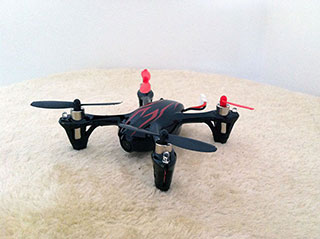
Drones have altered modern-day photogrammetry by easing capturing of photogrammetric geodata, especially compared to satellites, airborne photogrammetry, and traditional land surveying. They are more immune to bad weather than satellites or aircraft, and they are much cheaper to run.
All this intrigued me to buy one. But the problem was their high price, and very long and steep learning curve to properly fly them without breaking them, or hurting somebody on the way.
Until I’ve found interesting and very affordable little drone with a camera - Hubsan X4 H107C.
Hubsan X4 is small, 2.4Ghz 4 channels RC quadcopter, with 0.3 MP camera, 6-axis gyro and flying outdoor ability. It was a perfect way for to me to get into drones for an affordable price.
After some googling, I’ve found it on the Chinese webshop called Banggood. The shop has very mixed people reviews, but I’ve decided to take a shot and ordered one from them. I also bought reserve battery and 16GB MicroSD card to have more flying time and to record video.
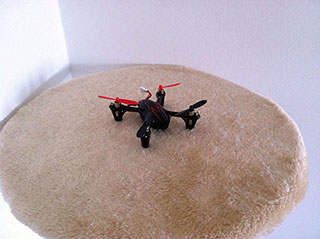
After a standard one month of waiting for a package from China, the drone has arrived. Everything was very nicely packaged, and I had no complaints.
I opened the box, and in the time I recharged two batteries I’ve read the instructions. Nothing complicated I thought. But how wrong I was!
I did some initial calibration, and on the first lift-off, drone smashed to the wall. Of course, one little blade was completely broken with other blades severely damaged.
This crash was the end of my first test flight.
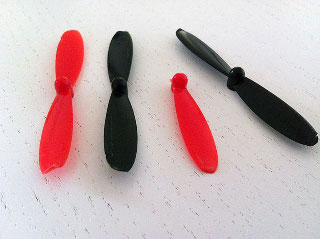
I’ve ordered immediately new replacement blades set, plus few additional spare blades, plus protection cover so the next time I hit the wall I have at least some buffer. Again, one month later the spare parts arrived, and I was ready for new round of testing.
This time I was smarter and better prepared. While I was waiting for spare parts to arrive, I was reading and watching YouTube videos on how to calibrate and fly the drone properly.
After I replaced all the blades with new ones and fitted cover protection, X4 was ready for a new test flight. Before I moved furniture away and placed the drone in the middle of an empty room.
The second lift-off and test flight was much more successful.
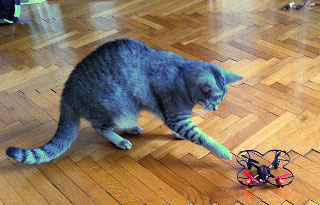
Drone reacts very fast to the commands and is very agile. If you are flying indoor, the X4 will skid around the floor until it reaches a point above the turbulence created by its spinning propellers. You need to lift X4 at least one meter from the ground to get into clean air.
Of course, I crashed the drone few more times, but thanks to the protection cover I didn’t break any more blades. The most important thing to bear in mind is that when X4 crashes you need to cut the throttle to zero immediately! This way you protect the blades and the motors. If the motors are unable to rotate during a crash, they will burn out quickly.
X4 comes with a 3.7V 380mAh battery with declared flight time around 7 minutes and charging time 40 minutes. My experience confirmed this. However, if you are recording with a camera and doing a lot of maneuvering (especially if you are flying indoor), the actual flight time is around 5 minutes. This is why you need to invest in some additional batteries. I have at the moment three batteries which provide around 15-20 minutes of flying.
Although X4 looks like a child’s toy, it is not. It should be treated with the respect of a full-scale drone and it takes patience and lots of practice to be able to fly it properly. Some people are suggesting that you need to invest 10’s of hours into practicing before you can do anything spectacular like pre-programmed flips, or especially if your want to record a nice and stable video.
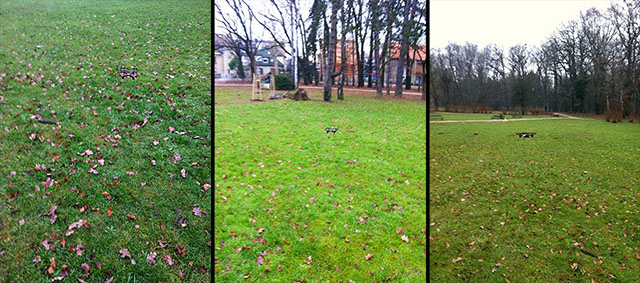
The Hubsan features 6-axis stabilization system, but it doesn’t have any autopilot mode, which means that it is unable to hover on its own. The X4 needs to be ‘flown’ all the time to maintain an even hover and stable flight. When flying the X4 drone, continual stick inputs are necessary. You must counter the directional movement with reverse stick movements e.g. moving the pitch stick forward will cause the X4 to fly forwards, and to return the X4 to steady hover, you will need to apply back stick momentarily to halt the forward motion.
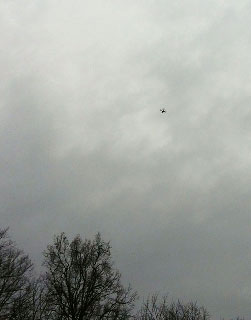
Outdoor flying is much better experience and more enjoyable than indoor, mostly because you have more free and open space. The X4 is very fast and stable even in windy conditions. When landing you need to be careful not to hit the ground too hard because the plastic housing could break. Soft grass is the best for landing, but you still need to be careful. X4 features four little LED lights in two colors that help you better sighting and orienteering. But don’t fly X4 too far away initially, orientation may become a problem with the X4 easily lost against a backdrop of trees, bushes and ground cover. With all this in mind, and initial fear of flying and crashing, I didn’t test its range.
My original plan was to include videos in this review, but my flying skills are not yet that good to produce stable and watchable videos. I’ll post them as soon I’ll have some good and representable footage. In the meantime you can check videos by other Hubsan X4 pilots.
All in all, Hubsan X4 H107C is a great little beast and very fun to fly. I would recommend it to anyone interested in RC and drones with a limited budget. Just buy a lot of spare parts because you will need them, sooner or later.